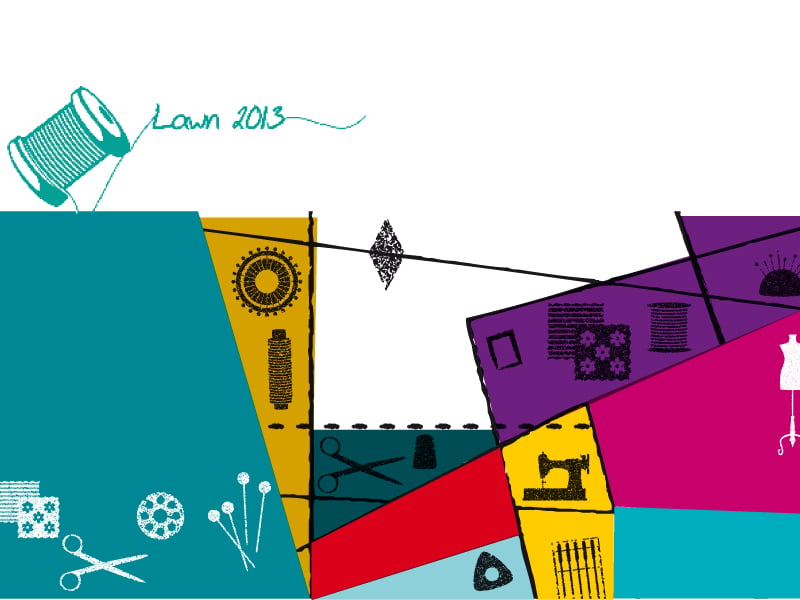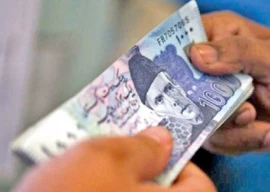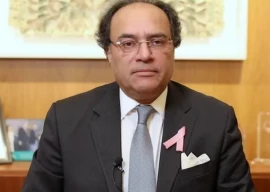
Whether it’s a casual gathering or a formal evening, the decision of ‘what-to-wear’ on a warm summer day is not between various fabrics — it’s in the different styles of lawn. Closets are full of printed, plain and coloured lawn outfits, which one can never have enough of, to endure the sticky season. From the history to the stalwarts of lawn, The Express Tribune brings this summer fabric to the limelight.
Lawn fabric is made up of fine cotton threads which are either combed or carded yarns. If lawn is made using combed yarns, the fabric is known as “nainsook” (delight to the eye), which was often used to make babies’ clothes in the ‘50s.
“Approximately 50 years ago, we started to produce lawn and continue to do so till today,” says Ziad Bashir, the executive director of Gul Ahmed textile mills. “We are a vertically integrated mill and start our process from spinning of cotton yarns to the finished product.”
He also feels that lawn is designed using fine yarns, resulting in a silky, untextured feel (nainsook). “It’s best for our weather because it’s comfortable for Pakistani women. Since most parts of the country experience warm weather, Pakistani women love to wear lawn,” says Bashir. “Women can’t resist the bright colours, floral prints, soft feel and embroidered motifs.”
Bashir feels that lawn lovers will always prefer the fabric for its quality and comfort over others available in the market. “Fashion may come and go, but lawn is here forever, be it stitched or unstitched.”
Abid Umer of AlKaram Textile Mills believes that lawn became popular once the printing technology was available in Pakistan. “The process starts with selecting the right yarns and goes onto the weaving method. Then it gets prepared for printing, and the final stage is checking and packaging.”
Although AlKaram has previously involved designers like SanaSafinaz, Karma, Mehdi, HSY, Umar Sayeed and Faiza Samee to design lawn, Gul Ahmed prefers the designs to be in-house creations.
According to Bashir, partnerships between a textile mill and designers have transformed this day-wear into exclusive formal-wear. “Textile manufacturers and fashion designers decided to leverage each other’s strengths and launch lawn officially into the fashion world. A fabric which used to be worn as a casual, daily wear outfit due to its comfort and breathability is now also entering the world of semi-formal fashion.”
We can see the evolution of this fabric — that started out as a simple, no-fuss cloth — on billboards all around the country. Modern cuts and wider silhouettes have replaced the typical three piece shalwar kameez and dupatta. Not only has the fashion element crept into lawn design, manufacturers are now out to one up each other when it comes to brand ambassadors.
Farrukh Mian, a consultant for various designer lawn brands this year who is also the CEO of Textile Links, says the local formula works best. “Local models should be promoted. Indian models are way too expensive!” he says.
He also lauds Gul Ahmed for sticking to the tradition of in-house designers. “This is their clear-cut strategy,” he says. “They do not need to have other designers. They should definitely stick to their in-house designers as Gul Ahmed is after all a big name.”
Process: Step-by-step
1. Cotton crops are harvested in October
2. Crops are purified (through ginning)
before going to textile mills
3. After purification, the spinner makes threads
4. The weaving mills use the cotton threads to weave cloth out of it
5. The cloth is then dyed, processed and printed at textile mills
6. From the mills, it is packaged and distributed for shops and outlets
Facts
7.5 million pounds of Pakistani lawn were consumed during 2012
A high number of designers participated in lawn-making last year because it was a fast and hefty return on their investments; however, the poor quality of the cloth and colour bleeds led them to discontinue this year. Their merchandise was either returned or not sold at all which resulted in heavy losses. There were 108 designer lawns in the market in 2012 but only 60 brands remain for this year.
Cost
95% of designer lawn in 2013 will be under Rs5,000 5% of designers will charge between Rs5,500 and Rs8,000
Prediction
Lawn markets in India, Bangladesh, UK and USA, followed by Dubai and the Middle East will see a tremendous rise in their profits.
All details have been provided by Farrukh Mian, CEO of Textile Links and consultant for various designer lawn brands this year.
Published in The Express Tribune, March 6th, 2013.
Like Life & Style on Facebook for the latest in fashion, gossip and entertainment.
COMMENTS (2)
Comments are moderated and generally will be posted if they are on-topic and not abusive.
For more information, please see our Comments FAQ



































1714129906-0/Clint-Eastwood-(1)1714129906-0-270x192.webp)






what premise is your prediction based on? illogical article.
what was the point of this article? did you want to explain the textile manufacturing process? because i don't think the end consumer is interested.